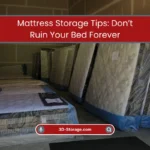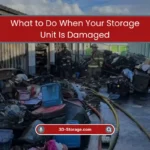Okay, real talk time. It’s that time of year. The last ride is a memory, and now your bike or RV is sitting there, looking at you. It’s asking, “So, what’s the plan, boss?”
If your plan is to throw a tarp over it and hope for the best, let me stop you right there. I’ve done that. It ends with a dead battery, a mysterious new rust spot, and that sinking feeling in your gut when you realize you’ve let your pride and joy down.
Storing this stuff properly isn’t about being a fancy expert. It’s about avoiding that gut punch in six months. It’s about a little bit of work now so that when the sun comes back, you’re ready to roll, not ready to cry. Let’s walk through this like we’re in the garage together.
The “Please Don’t Hate Me” Pre-Storage Checklist
Think of this as tucking your gear in for a long nap. You want it to be cozy and safe.
For Your Motorcycle (From a guy who learned the hard way):
Wash it. No, really wash it
Get all the summer bug guts and road grime off. That stuff isn’t just dirty; it’s acidic. It’ll slowly eat your clear coat and stain your chrome if you let it sit all winter. Dry it completely with a soft towel. Get into those weird spots behind the forks.
The Gas Tank Debate
Here’s my method, born of fixing a gummed-up carb one very frustrating spring: Fill the tank all the way to the top with fresh high-octane gas. This leaves no room for air, which means no room for condensation and rust. Then, add a good quality fuel stabilizer. Follow the directions on the bottle. Then, start the bike and let it run for a few minutes. You’re getting that treated gas all through the system. This keeps the gas from turning into nasty shellac.
Change the Oil
Old oil is full of junk and acids from the engine. Letting that sit all winter is like marinating your engine in the bad stuff. Fresh oil is clean and neutral. It’s a way nicer bath to sit in.
The Battery. Ugh, the Battery
Just take it out. Seriously. Bring it inside, put it on a piece of wood on your workbench or in a closet, and hook it up to a battery tender—one of those smart maintainers. A tender babysits the charge. Leaving it in the bike, connected, is a guaranteed way to buy a new one in the spring. Trust me on this.
For Your RV (It’s a vehicle AND a house):
- Evict the Mice: They’re already scouting your RV for a winter Airbnb. Take EVERY speck of food out. Every cracker crumb, every unopened packet of oatmeal. Wipe everything down. I leave a few dryer sheets in the cupboards and under the sink—mice hate the smell. Seems to work.
- Winterize the Plumbing: This is the Big One. If you skip this, you’re playing Russian roulette with your wallet. You MUST get all the water out of the pipes and tanks. Drain the fresh water tank, the hot water heater, and open all the low-point drains. Then, you need to blow out the lines with an air compressor or, better yet, pump non-toxic RV antifreeze through them. If water freezes in a pipe, it expands and cracks it. Then you get a lovely indoor pool when it thaws. Don’t risk it. If you’re not sure how, pay a pro. It’s worth it.
- Give it a Good Bath: Wash and wax the exterior. Clean the roof! Check all the seals around windows and doors. A quick afternoon with a tube of caulk can save you from a leak and a world of moldy trouble later.
- Disconnect the main battery and shut off the propane tanks at the valve.
Where to Park It: The “Where” Matters as Much as the “How”
Your driveway is easy. It’s also the worst option. The sun beats down on it, rain and snow seep into every seam, and it’s an advertisement for anyone looking to swipe parts.
- A flimsy tarp is barely better. It traps moisture and scratches the paint in the wind.
- You know what’s best? Walls and a roof. A dry, secure space that acts like a garage.
I’m not just saying this because it’s my job—I’m saying it because I’ve been the guy worrying about his bike in a snowstorm. At 3D Storage, this is exactly why we built what we did. We’re not a fancy corporation; we’re folks who have RVs and bikes and need a better solution. We offer simple, clean, and secure units where you can park your stuff and actually sleep at night. No stress. No weather. No worries. It’s the difference between hoping your stuff is okay and knowing it is.
The Last Little Bits Before You Lock Up
- For the bike, if you have a stand, lift the tires off the ground to prevent flat spots.
- For the RV, chock the wheels and maybe even cover the tires to protect them from sun damage.
- Put a good, breathable cover on your bike. For the RV, a proper RV cover is great if you can manage it.
Do this stuff now, and I promise you, spring will feel like Christmas. You’ll walk in, connect the battery, turn the key, and hear that beautiful roar instead of a sad click.
Then you can just focus on where you’re going to go first. We’ll be here, keeping your key to freedom safe until you need it.








0 Comments